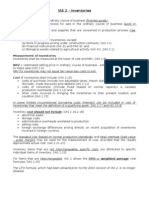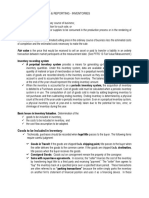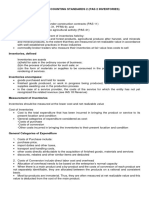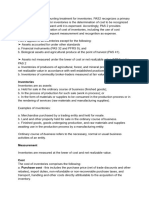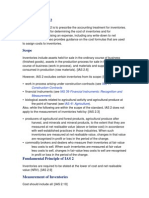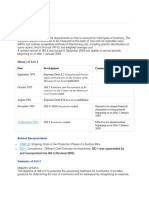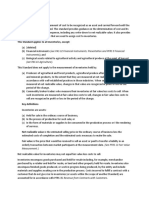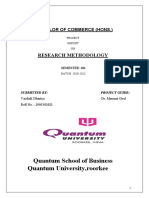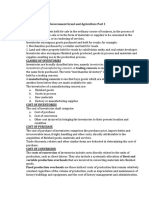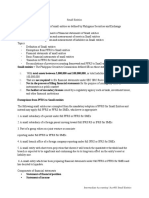0% found this document useful (0 votes)
13 views8 pagesLecture Note Three Incomplete
IAS 2 outlines the accounting treatment for inventories, detailing definitions, recognition, measurement, and cost determination. It specifies that inventories should be recognized as assets at the lower of cost and net realizable value, and provides methods for measuring inventory costs, including FIFO and weighted average cost. Additionally, it addresses the treatment of discounts, VAT, and costs that should not be included in inventory costs.
Uploaded by
modupetalabi8Copyright
© © All Rights Reserved
We take content rights seriously. If you suspect this is your content, claim it here.
Available Formats
Download as DOCX, PDF, TXT or read online on Scribd
0% found this document useful (0 votes)
13 views8 pagesLecture Note Three Incomplete
IAS 2 outlines the accounting treatment for inventories, detailing definitions, recognition, measurement, and cost determination. It specifies that inventories should be recognized as assets at the lower of cost and net realizable value, and provides methods for measuring inventory costs, including FIFO and weighted average cost. Additionally, it addresses the treatment of discounts, VAT, and costs that should not be included in inventory costs.
Uploaded by
modupetalabi8Copyright
© © All Rights Reserved
We take content rights seriously. If you suspect this is your content, claim it here.
Available Formats
Download as DOCX, PDF, TXT or read online on Scribd
/ 8









